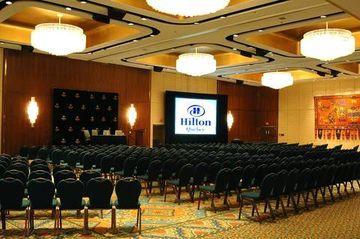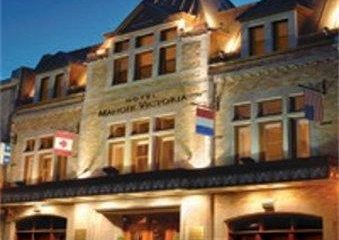Trip Ideas
7 Days on the Mekong: How the Saddest River in Asia Made Me Smile
- /home/discountdealsonh/public_html/wp-content/plugins/mvp-social-buttons/mvp-social-buttons.php on line 27
https://www.discountdealsonhotels.com/wp-content/uploads/2017/08/Mekong-0.jpg&description=7 Days on the Mekong: How the Saddest River in Asia Made Me Smile', 'pinterestShare', 'width=750,height=350'); return false;" title="Pin This Post">
- Share
- Tweet /home/discountdealsonh/public_html/wp-content/plugins/mvp-social-buttons/mvp-social-buttons.php on line 69
https://www.discountdealsonhotels.com/wp-content/uploads/2017/08/Mekong-0.jpg&description=7 Days on the Mekong: How the Saddest River in Asia Made Me Smile', 'pinterestShare', 'width=750,height=350'); return false;" title="Pin This Post">
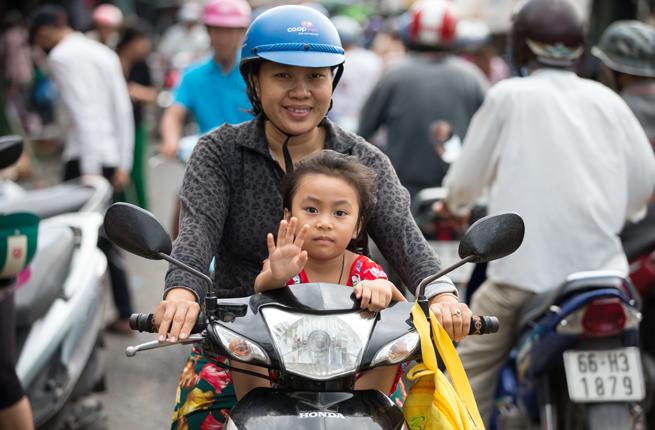
The Mekong River, for those of a certain generation, flows with melancholy. The mental images it conjures are as clear today as when they were broadcast over Walter Cronkite’s shoulder on the Evening News 50 years ago.
But I was curious about Vietnam and Cambodia. I had heard from other travelers that they were fascinating and welcoming destinations. So, I decided to take a cruise on the Mekong. The itinerary would take us from the Mekong Delta in southern Vietnam to Kampong Cham, Cambodia, some 328 serpentine miles north. As I suspected, the trip would prove to be an eye-opener.
Day One: Setting Sail
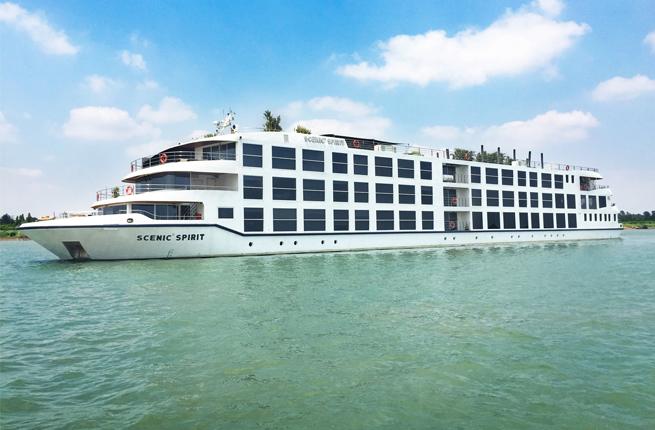
My initial glimpse of the Scenic Spirit occurred on the dock at My Tho, Vietnam, where I was initially put off by the ship’s elegance, its vast picture windows, its bright shiny whiteness. Launched in 2016, the Scenic Spirit is arguably the most luxurious ship on the Mekong. The swimming pool—a rarity on river cruises—was deep and long enough to swim laps. Considering that the ship has five decks, the central elevator (another rarity in river cruising) was a blessing. All the rooms are suites with balconies. The windows in my quarters went from floor-to-ceiling in both the bedroom and sitting room. The dressing room was far too large for a single traveler, and probably for two. Oh, and did I forget to mention the personal butler? Any reservations I might have harbored about a first-class ship in a third-world country dissipated as we sailed at sunset.
Day Two: Cai Be – Tan Chau, Vietna
In Vietnamese waters, the Scenic Spirit was obliged by regulation to anchor in mid-river, so guests were tendered by sampans to their shore excursions. That’s how I arrived in Cai Be, our first stop, a busy village dominated by the graceful steeple of its Catholic church. As I roamed the streets, I saw girls hand-rolling candy, men making popped-rice snacks, factory workers separating coconut meat from the husks. The industriousness of the people was impressive.
I met a man in Cai Be selling snake wine from two five-gallon glass jars. The wine-seller, a guy with a mustache and a leer, pulled a dead cobra out of the jar and held it in front of the faces of aghast tourists, challenging them to drink. Always ready to test myself (and usually to my regret), I asked for some. The slinky sommelier smiled, waggled the cobra in my face, and then decanted a thimble-size serving. Glass in hand, I held my breath and poured the liquid down my throat. Moments passed. When at last I could breathe again, I realized the wine tasted a little like Japanese sake. “They believe it improves men’s, er … ability,” said my guide. “Men drink, women happy.”
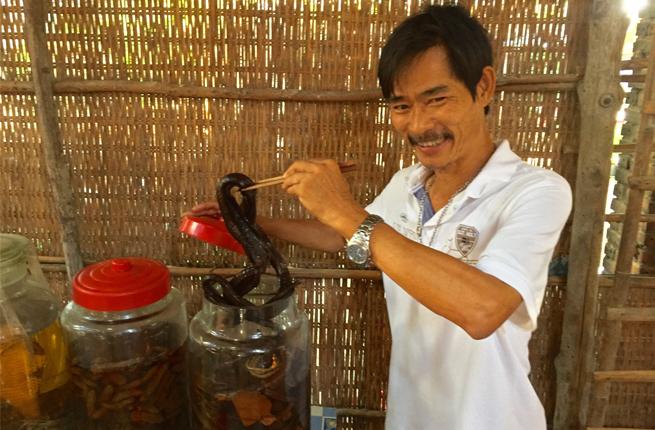
That afternoon we anchored just offshore of Sa Dec, a town farther upriver, known as the setting for the romantic novel (and later film) The Lover [L’Amant], written by Marguerite Duras. Many of the passengers were eager to see the 19th–century house where much of that tale of forbidden love takes place. But I was far more interested in visiting the lively street market. The sounds of the market were rife with songs that resembled the schoolyard taunt, “Nya nya nya-nya nya,” but in fact were sellers announcing their wares—prawns, tiny bananas, tripe, catfish, mice (meant to be marinated and grilled), snakehead fish, frogs, and live free-range chickens. (The chickens sell for $4 a kilo; for an additional 50 cents they’ll dispatch your chicken and pluck it for you.)
In was in the Sa Dec market that I met a woman selling betel nuts, which, when chewed, are a mild stimulant that leaves users’ teeth red. I saw no redness on her teeth and asked if she liked to chew her product. She made a face of disgust, then giggled. She never chews them, she said; she doesn’t like the taste. She seemed quite amused at the thought of selling a product she didn’t even like. Yet she earns about $10 a day selling the nuts to her customers, she said. Considering the average Vietnamese worker earns $150 a month, no wonder she smiled so much.
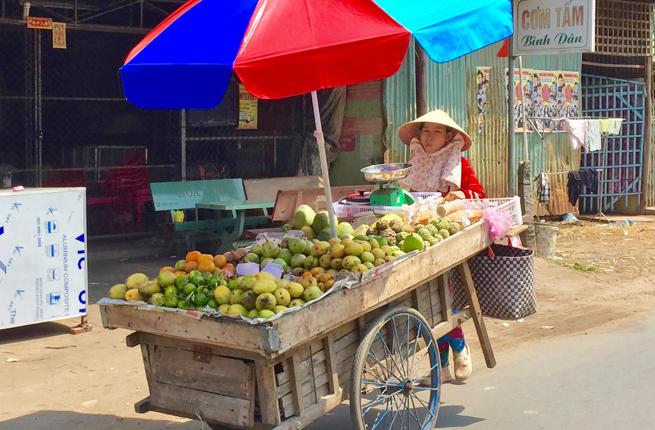
Day Three: Tan Chau, Vietnam – Cambodian Frontier
Some days were spent mostly on the river, and this was one of them. But first I opted for an excursion to a farming village on Evergreen Island near the town of Tan Chau. The village, on first look, struck me as impoverished, but then I noticed that corrugated metal roofs outnumbered those of palm fronds. Though the houses, raised on pilings, were rickety, they were neat and organized. Next to the entrance of each home was a large ceramic jar of water for entrants to wash their feet before walking inside. Traditional music wafted out a window, and our guide, Tuan, gently swayed to the tune.
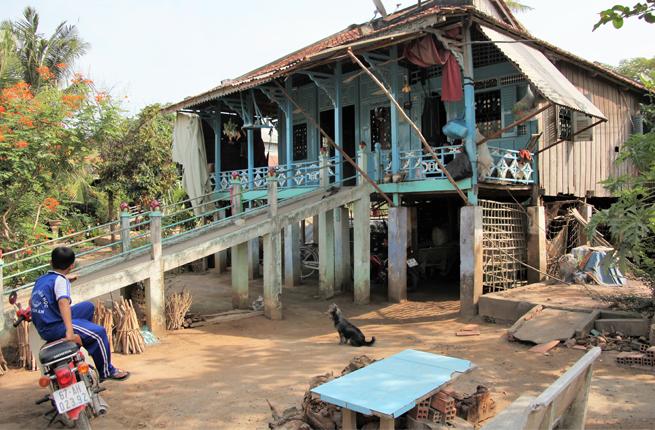
We passed a chili farm with hot but not-too-hot chilies (I know because I plucked and tasted one). The chilies are sold mainly to China, where they are in high demand. The farmers earn between $4,000 and $5,000 a year by growing chilies for the Chinese market, Tuan said. Besides chilies, the farmers here grow bananas and mangoes. “They’re a very happy people,” said Tuan. “Life is getting better since the government allowed the market economy. The life is improving.”
Boys and girls followed us as we walked along the dirt lanes. When we pointed our iPhones at them, they laughed, punched one another in the arms, mugged for the cameras, and waved as they rode away on their bikes—just like kids anywhere in the world.

Day Four: Phnom Penh, Cambodia
Almost immediately after crossing into Cambodia, one could notice a difference in the surroundings. The fishing villages seemed to be made of poorer materials. Fewer cars and trucks plied the riverside roads. Gone were the cement company dredgers scouring the river bottom for sand, as in Vietnam. Palm-frond roofs outnumbered those of clay tile and corrugated steel. Unlike Vietnam, Cambodia seemed like a land stuck in the past.
Those who recall the Vietnam War will likely remember Cambodia’s most hellish period, the brutal Khmer Rouge regime of 1975-79. As a result, shore excursions in Cambodia assumed a poignancy.
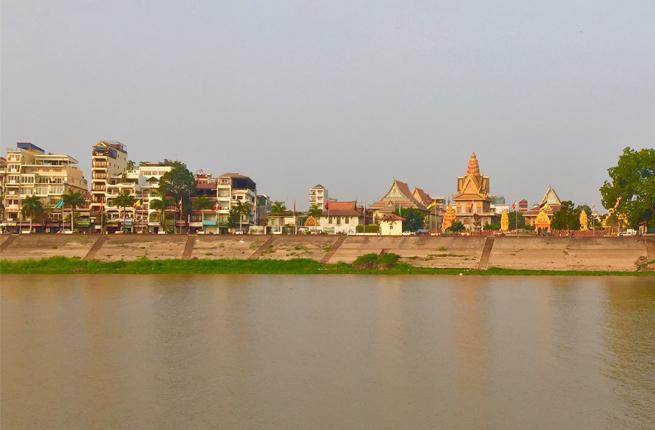
While some passengers chose to spend that first day in Cambodia touring Phnom Penh’s French-colonial architecture or taking a cooking class, many of us decided to see a more disturbing part of the country’s heritage. Our first stop, just a few miles outside the capital, was the notorious Killing Fields. There and elsewhere, some 2 million everyday citizens were murdered by the Khmer Rouge, who sought out so-called intellectuals—often anyone with an education, or even who just wore glasses—for fear that they opposed the regime.
Returning to the city, we paid a visit to the Tuol Sleng Genocide Museum, a Khmer Rouge prison in a former high school they renamed S-21. I was surprised at the crowds waiting in line to buy tickets for such an unlikely attraction. We walked among tiny jerry-rigged cells where prisoners had been grilled and beaten. Chains still dangled from bare metal bedsteads where torture victims were once shackled. Barbed wire still screened the jail’s upper floors, placed there to prevent despondent prisoners from taking suicide leaps. Bolts on the cell floors showed how the victims were fettered in place, awaiting their fate.
One whose fate was not sealed at S-21 is 86-year-old Chum Mey. I met him that morning in the yard of the prison where he was once incarcerated. “I was tortured and my wife was killed by the Khmer Rouge,” Chum Mey told me through an interpreter. He survived “re-education” and was sent to work as a laborer. Thirty years later, he wrote a book about his experience. Now he comes to the former prison every day to sell copies of his book and to meet the tourists. “I’m very happy to see all the people coming here,” he said. “I hope you will go back home and share my story with your friends.”
Day Five: Phnom Penh – Koh Chen, Cambodia
The next morning I joined a tour of the Royal Palace and National Museum. Their elaborate traditional architecture, lush landscaping, and peaceful settings helped take the edge off the previous day’s unsettling excursion.
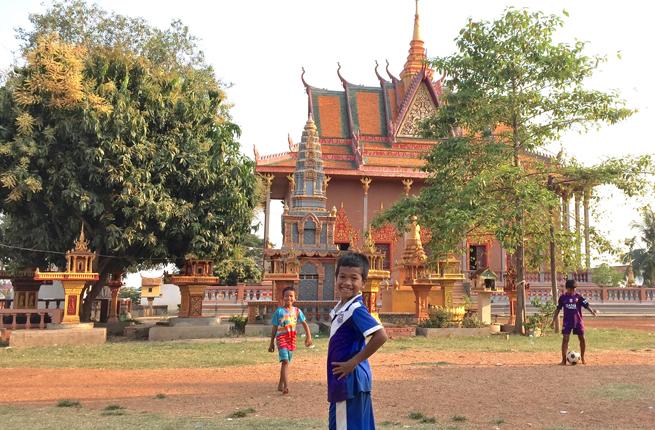
At noon, we pulled away from the dock at Phnom Penh and made our way north to Koh Chen, a silversmith village where some 150 families operate out of homemade factories, often little more than a covered patio attached to a house. My fellow passengers were intensely curious about the trade, asking for demonstrations of the silver-plating process and browsing the shelves for souvenir bracelets, necklaces, and rings.
The streets of Koh Chen, like in so many Cambodian villages, are hard-packed dirt. As we followed one of those roads, we passed a group of boys playing soccer on the grounds of a multi-colored temple. Some in my group didn’t realize they were interrupting the boys’ game to take pictures of the temple, but the kids just smiled and waved when any of us made eye contact. The boys seemed to take it in stride, but I regret that I didn’t know the Khmer language for, “Sorry we messed up your game, guys!”
Just around the corner from the temple, we met Oum Son Thon, 83, a former teacher who survived the Khmer Rouge by impersonating a laborer. He now has the finest house in the village, thanks to his successful offspring. Next to his home is an open-air classroom where he teaches math to the local kids. He takes much more pride in his 30 students than in his handsome villa.

Day Six: Koh Chen – Kampong Cham, Cambodia
The average age of the passengers on the Scenic Spirit was somewhere in their sixties, but that didn’t stop most of them from rising early for an unusual trip: a 20-minute ox-cart journey on washboard roads to a small temple. The phrase “bone jarring” comes to mind. All the travelers were good sports about the rough ride, but clearly grateful to then board modern motor coaches for our main destination, Oudong Temple.
Sometimes it’s useful to research everything in advance; other times, it’s more rewarding to embrace the mystery. That’s what happened to me in the Oudong pagoda, where we sat on the floor in the shadow of a massive Buddha statue while two monks chanted for 15 minutes. “We invite the gods to remove sin and return prosperity to the earth,” one of them said, through a translator. Then, unexpectedly, they began to throw lotus buds at us. They were pretty hard, too—hard enough to make me close my eyes and duck my chin. And then, like my fellow passengers, I laughed quietly, marveling at the strangeness of it all.
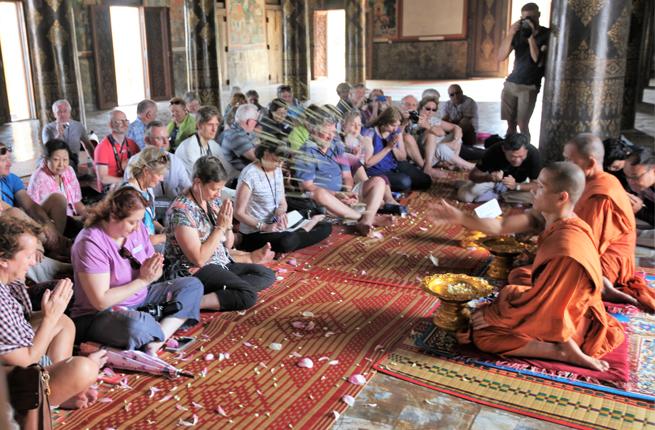
Day Seven: Wat Hanchey – Kampong Cham, Cambodia
I met a 13-year-old novice monk on my last full day on the Mekong. The place was called Wat Hanchey, some of whose temples are older than their more famous cousins at Angkor Wat. The boy’s family name was Chea; his given name was Chek, which means banana. “My family comes to visit me once a month,” he said, with a shy smile. His favorite subject in class was literature. When asked about his future, he said he didn’t know how long he would remain at the temple, but he likely would be a novice until age 15, at which time he could go on to high school and, possibly, university. His ultimate goal? “I would like to be a doctor,” he said.
Day Eight: Kampong Cham – Siem Reap, Cambodia
Most river cruises on the lower Mekong end near Kampong Cham, and passengers are taken by motor coach from there to Siem Reap and its international airport. Some guests stay on to visit the temple complex at Angkor Wat, while others fly directly home. The four-hour coach ride, which at one point passed over a centuries-old stone bridge, is a perfect time to reflect on the past week’s experiences. The visits ashore had their stark moments, to be sure. But to cruise the Mekong, whether on the Scenic Spirit or any of the competitive ships, is mostly an upbeat, often heartwarming journey through one of the most remote, colorful, enchanting corners of the world, full of music, full of smiles, full of mysteries unraveling before you.
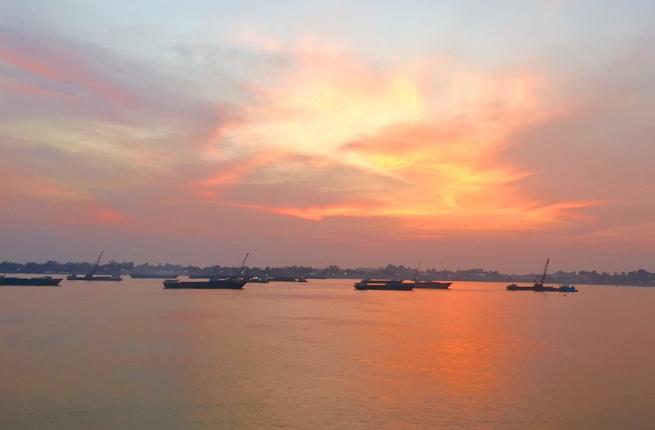
And do I worry that the luxurious, cosseting confines of the Scenic Spirit were at odds with what I was seeing? It’s a specious premise. People were talking across borders, contributing to the local economies, making contacts, friends even, at a time when the world is roiled by fear. Our little river haven may not have been indicative of society at large, but it had a hell of a lot going for it.
Trip Ideas
10 Under-the-Radar Honeymoon Destinations in Asia
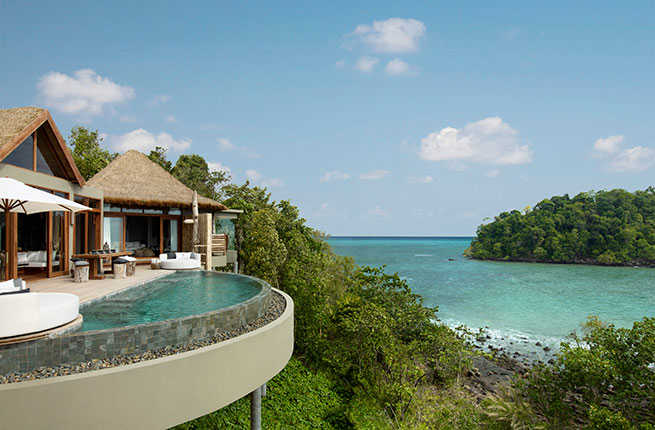
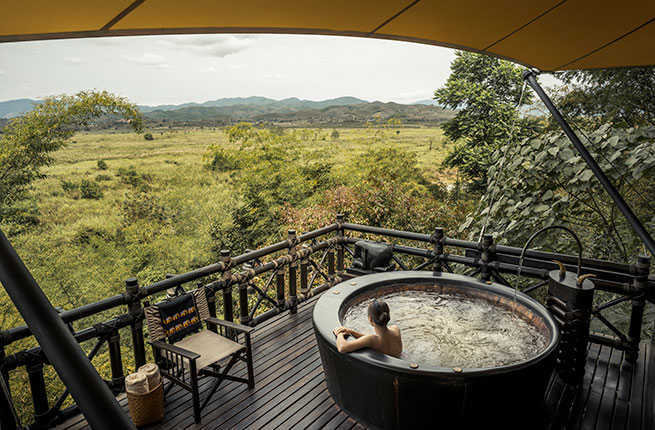
Four Seasons Tented Camp Golden Triangle
Where: Chiang Rai, Thailand
There’s camping—and then there’s Four Seasons camping. Conceived by Bill Bensley Design, this colonial-inspired Four Seasons Tented Camp Golden Triangle is rustic luxury at its best. The 15 thatched-roof “tents” are all kitted out with handcrafted furniture, hardwood floors, claw-foot tubs, and 19th-century artifacts strewn about just so. Located in the Golden Triangle—where Laos, Myanmar, and Thailand meet—this romantic resort is ideal for outdoorsy types and adventure seekers. Not only is the Northern Thailand region known for its wild elephant herds, but there’s also easy access to jungle trekking, tea plantations, bamboo rafting, birdwatching, and riverside picnics. Of course, if you’re just there to relax and fall in love all over again, a Thai meal at the beautifully designed Nong Yao Restaurant, a private wine-pairing dinner in the Wine Cellar, or a few lemongrass martinis at the Burma Bar should keep the magic alive. This is the only all-inclusive Four Seasons in the world, so don’t hold back.
Getting There: The easiest access point is Chiang Rai in northern Thailand. From there, it’s about a 1.5-hour drive to the Golden Triangle.
Insider Tip: Want to have breakfast with wild elephants? There’s a specially built platform above their habitat where guests can enjoy tea and coffee while the beautiful animals roam below.
PLAN YOUR VISIT: Fodor’s Chiang Rai Guide
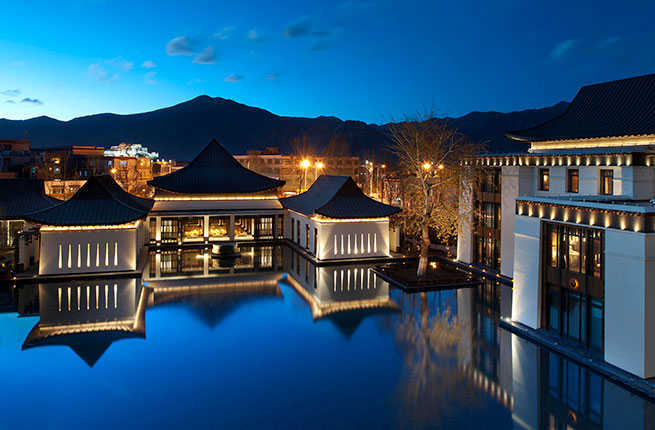
St. Regis Lhasa
Lhasa, Tibet
Tibet is known for many things—sacred temples, snow-capped peaks, cliff-side retreats, the Dalai Lama—but it’s also a romantic honeymoon destination in its own right. Perfect for culture hounds and adventure enthusiasts, the Himalayan outpost offers unrivalled natural beauty in its shimmering lakes, sun-kissed rice paddies, and colorful monasteries. While there are lots of rustic bed-and-breakfast options for a budget-friendly adventure in “The Roof of the World,” an influx of luxury properties offer modern amenities and a romantic touch. Head to the St. Regis Lhasa Hotel or the Shangri-La Lhasa for all-out bliss in this mountain paradise.
Getting There: Tibet has strict visa regulations that render independent travel off-limits, so you’ll need to book a tour guide. Work with a travel agency to ensure you’re all good to go.
Insider Tip: Plan to visit in April or May, when the ice starts to melt and the sun comes out.
PLAN YOUR VISIT: Fodor’s Tibet Guide
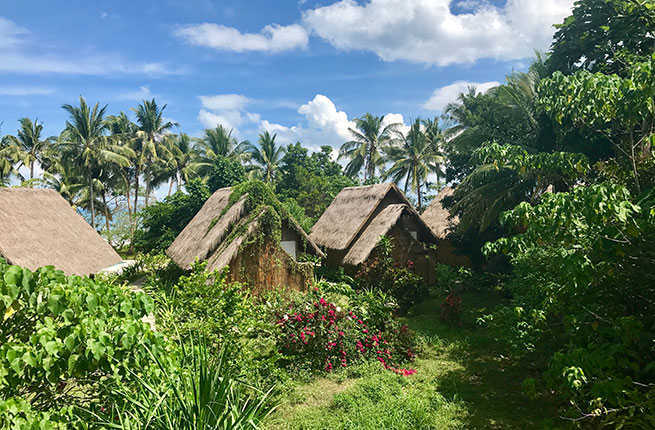
Qi Palawan
Where: El Nido, The Philippines
When it comes to affordable vacations, The Philippines remains one of the best-value destinations on earth. If island hopping is high on your honey’s wishlist, then make a beeline to El Nido and the surrounding Bacuit, toward the northern end of Palawan Island. Known for its dramatic karst mountains and white-sand beaches, this remote archipelago offers a long list of romantic and barefoot-luxe hotels. Skip the busy downtown hotels and head instead to an intimate outfits such as Cauyan Resort—hidden away on a lush island off the coast. Or head an hour outside of town to seven-cottage Qi Palawan, which sits at the northern edge of the island where spotless beaches, snorkeling, and untouched forests await.
Getting There: Skip the five-hour bus ride from Puerto Princesa, and fly straight from Manila to the El Nido airport.
PLAN YOUR VISIT: Fodor’s Philippines Guide
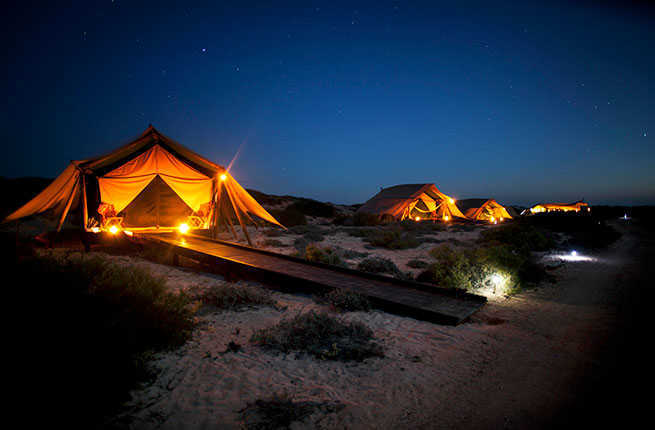
Sal Sals
Where: Ningaloo Reef, Australia
Not Asia, but a great side trip if you’re on this side of the world! Located on the Ningaloo Reef, about an hour’s drive from Exmouth in western Australia, Sal Salis is one of those middle-of-nowhere experiences that you’ll talk about for the rest of your happily married lives. Centering around the main lodge where guests enjoy breakfast as they watch the waves break at sea, the 16 tents sit along the Australian coastal dunes inbetween the Cape Range National Park and incredible gorges. As the retreat is all about celebrating and supporting the environment, travelers can expect solar-generated electricity, composting bathrooms, and all-natural soaps and shampoos. Of course, with proximity to the Ningaloo Reef, the main draw is the ocean itself. The list of activities is endless—think snorkeling, sea kayaking, bird spotting, gorge walks, boat trips, whale shark swims (April-July), humpback whale swims (August-October), and more.
Insider Tip: Be sure to plan ahead. This camp is only open from March to October—and it books up quickly with only 16 wilderness lodges, one of which happens to be an extra-spacious honeymoon tent with the best views of the beach.
Getting There: Qantas flies daily to Exmouth from Perth, with connections from other Australian capital cities.
PLAN YOUR VISIT: Fodor’s Australia Guide
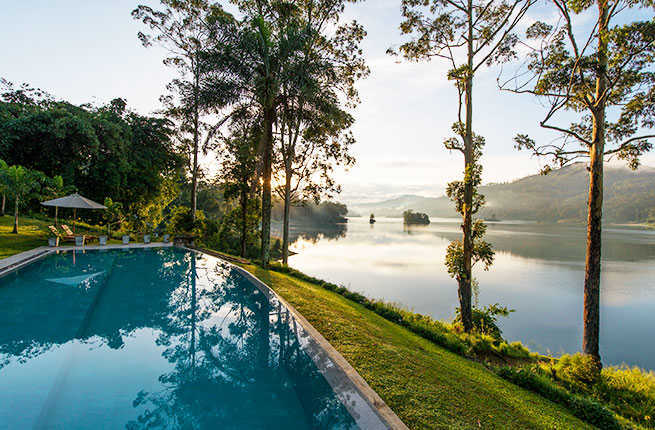
Ceylon Tea Trails
Where: Tea Country, Sri Lanka
Picture rolling green hills as far as the eye can see. Considered Sri Lanka’s most prestigious tea bungalow experience, Ceylon Tea Trails pays homage to English gardens, nostalgic furniture and roaring fires of days gone by. More like private houses than a hotel, each of the five intimate properties—all scattered across Sri Lanka’s tea country—features beautifully appointed rooms, sweeping lawns, discreet butlers, and expert chefs who whip up multi-course lunches and wine pairings as part of the all-inclusive experience. What better way to toast your marriage than with a gimlet in hand and a sunset over the hills of Sri Lanka.
Insider Tip: There’s a complimentary shuttle that will cart you between bungalows if you’re interested the comprehensive Tea Trails experience.
Getting There: Sri Lanka tea country is about a six-hour drive from Colombo’s international airport.
PLAN YOUR VISIT: Fodor’s Sri Lanka Guide
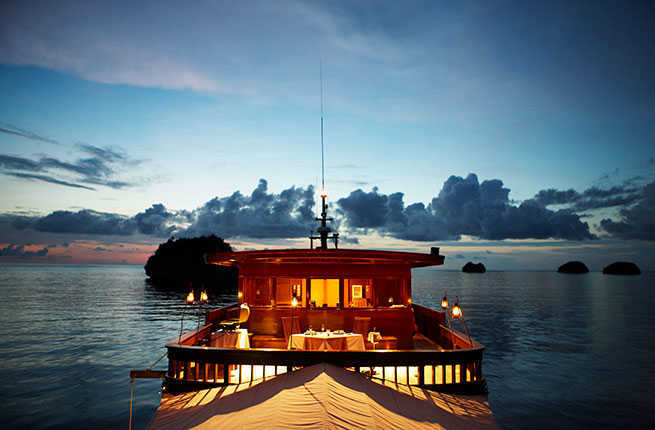
Raja Ampat Expedition
Where: Raja Ampat, Indonesia
Comprising 1,500 tiny islands, this idyllic archipelago in West Papua has managed to stay under-the-radar while other areas of Indonesia capsize with tourists. Thanks to a rich marine habitat and pristine coral reefs, Raja Ampat is a dream destination for sea-loving souls. The options are endless in these crystal-clear waters—you can fill your days with diving, sailing, exploring the rainforest, or simply lounging by the beach. If you’re looking to splurge, sail through the islands in pure luxury aboard the Amanikan or Amandira. Operated by Aman hotels, both cruisers offer five- and seven-night voyages that take off from Sorong and set sail for the horizon.
Insider Tip: It’s worth getting your Scuba certificate beforehand to get the most out of your trip, as Raja Ampat is said to have one of the densest marine habitats on earth.
Getting There: Fly into Sorong, in West Papua, and arrange a boat to reach your destination.
PLAN YOUR VISIT: Fodor’s Indonesia Guide
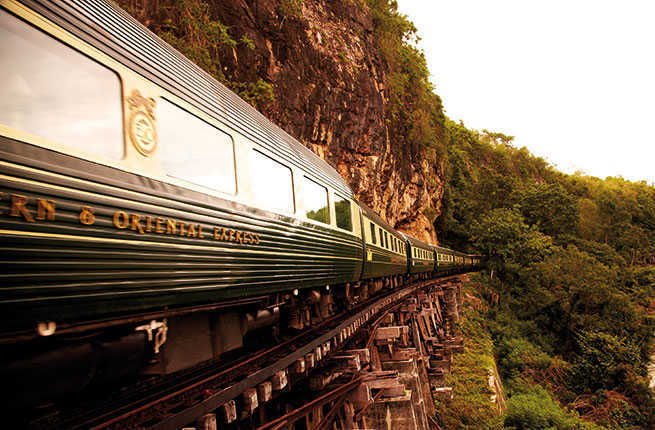
Eastern & Oriental Express
Where: Southeast Asia
There’s nothing like a romantic train ride to ring in your nuptials—and the one and only Eastern & Oriental Express will be an adventure to remember. Chugging from Singapore to Bangkok with stops in Penang and Kuala Lumpur, the nostalgic experience transports honeymooners to the golden age of train travel. Picture luxury cabins, fine-dining cars, classic cocktails, on-call butlers, and piano music fluttering through the air. The signature six-night journey, dubbed “Fables of the Peninsula,” starts at the Raffles Hotel in Singapore and winds its way up through Malaysia, stopping in Kuala Lumpur, Cameron Highlands, Penang, and finishing in Huay Yang, Thailand, about 185 miles outside of Bangkok.
Insider Tip: A teakwood train car at the back of the train is the best for sightseeing along the way.
Getting There: The Eastern & Oriental train departs from Bangkok, Kuala Lumpur, and Singapore.
Read More: Fodor’s 10 Most Unforgettable Train Rides
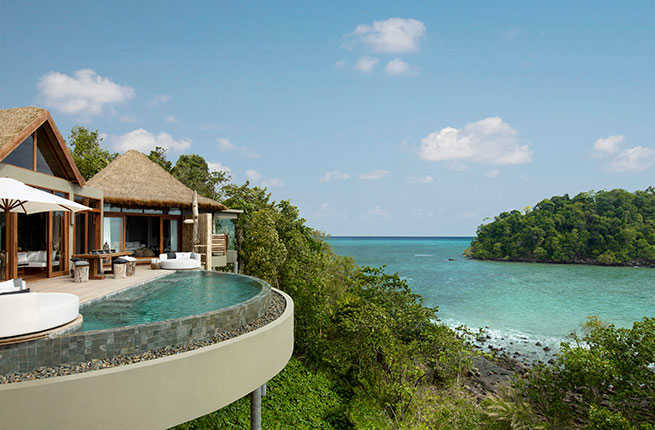
Song Saa Island
Where: Koh Rong Archipelago, Cambodia
Cambodia might not jump to mind as a world-class beach destination—but it’s an up-and-comer that’s as romantic as they come. For a luxurious getaway with an eco-friendly focus, check out Song Saa Private Island in the Koh Rong Archipelago. Known in Khmer as the “sweetheart” island, Song Saa is a family-owned property that’s been nothing short of a labor of love. Husband-and-wife duo Rory and Melita Hunter worked with the surrounding community to clean up the islands and set up Cambodia’s first marine reserve. Since then, their environmental efforts have brought marine life back to the waters so guests can now kayak, snorkel, scuba, and sail around the secluded coves. The couple designed every detail of the resort’s 27 overwater villas using reclaimed driftwood furniture, thatched roofs, stones, and local resources whenever possible.
Insider Tip: Pair the experience with a trip to Angkor Wat and Phnom Penh, and you’ll have quite the adventure.
Getting There: To get to Song Saa, travelers can fly to Sihanoukvill via Siem Reap or Phnom Penh. From there, the resort arranges a private boat to reach the island.
PLAN YOUR VISIT: Fodor’s Cambodia Guide
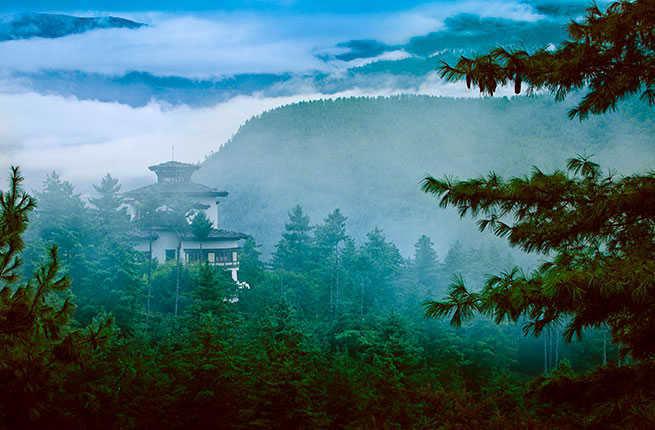
COMO Bhutan
Bhutan
There’s nothing more remote than the snow-capped mountains of Bhutan—especially in a helicopter tour with COMO Hotels. The pioneering wellness brand recently launched a picture-perfect, six-night Scenic Heli-Adventure that travels between the brand’s two Bhutan properties: four nights at COMO Uma Paro and two nights at COMO Uma Punakha. The cozy chalet-style lodges will make newlyweds fall in love all over again with sanctuary-like spas, a 60-minute COMO Shambhala body treatment, and complimentary yoga sessions. One of the most remote corners of the world, this hidden paradise has a bit of everything, from trekking to archery, white-water rafting, Bhutanese monasteries, mystical mountains, turquoise lakes, lush valleys and idyllic rice paddies.
Insider Tip: COMO’s spas cater to honeymooners, so treat yourselves to a couple’s treatment like the Bhutanese hot stone bath.
Getting there: Bhutan has specific visa requirements for travelers, so read up on it ahead of the trip.
PLAN YOUR VISIT: Fodor’s Bhutan Guide
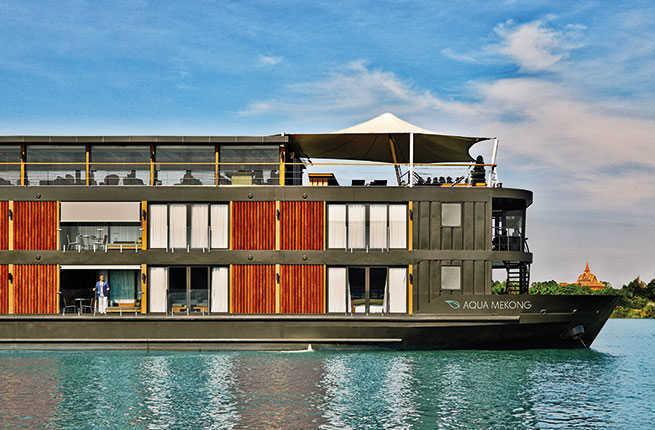
Aqua Mekong
Southeast Asia
Balancing contemporary design with rustic river vibes, the 205-foot Aqua Mekong will totally change the way you think about cruises. Instead of hordes of people and never-ending buffets, the Aqua Mekong experience revolves around intimacy and bespoke services, spa treatments, plunge pools, sun-downers, and river-view balconies—not to mention world-class fine dining David Thompson, a Michelin-starred chef from Australia. The luxury outfit traverses the waterways of Cambodia and Vietnam, with stop-offs to explore picturesque rice paddies and remote floating villages for an off-the-beaten path experience.
Insider Tip: Ask about the exclusive dinner options—the crew will set up a private couple’s tables on the top deck of the boat so you can lap up a bottle of wine under the stars.
Getting There: Cruises take off from ports in Ho Chi Minh City, Vietnam; Phnom Penh and Siem Reap, Cambodia.
PLAN YOUR VISIT: Fodor’s Mekong Delta Guide
Trip Ideas
10 Best Family-Friendly Amusement Parks in the U.S.
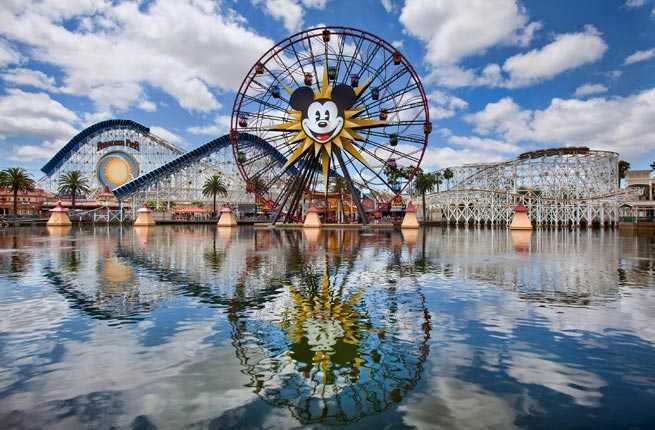
Providing picture-perfect moments and memories to last a lifetime, amusement parks are ideal places for family fun, but not all parks are designed for smaller visitors. Featuring the conveniences and necessities that children demand and parents appreciate, the country’s 10 best family-friendly amusement parks deliver a treasured day of thrills and laughs for kids and their keepers. Expect carousels, animatronic dinosaurs, and real bulldozers as these parks push the limits of innovation and creativity in the name of fun. — Zachary Laks
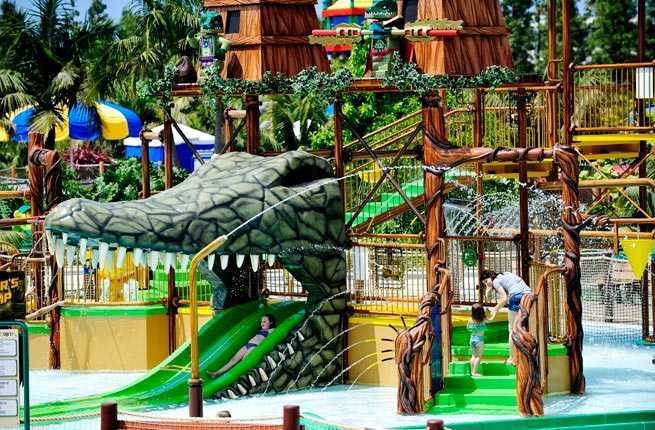
LEGOLAND
Carlsbad, California
Brick by brick, LEGOLAND stacks up to a full day of fun for the family in Southern California. Packed with activities, rides, and endless photo opportunities, the park expands into ten themed areas, with themes from Dino Island, where dinosaurs guard their territory, to Castle Hill, a province where kings and queens rule. The park achieves a good mix of thrills to keep adults engaged, particularly in the water park where the Twin Chasers slides propel riders down an enclosed red tube at intense speeds. Don’t miss out on the park’s SEA LIFE Aquarium where the Moon Jellyfish exhibit showcases the mystical sea creatures.
PLAN YOUR TRIP: Visit Fodor’s Carlsbad Guide
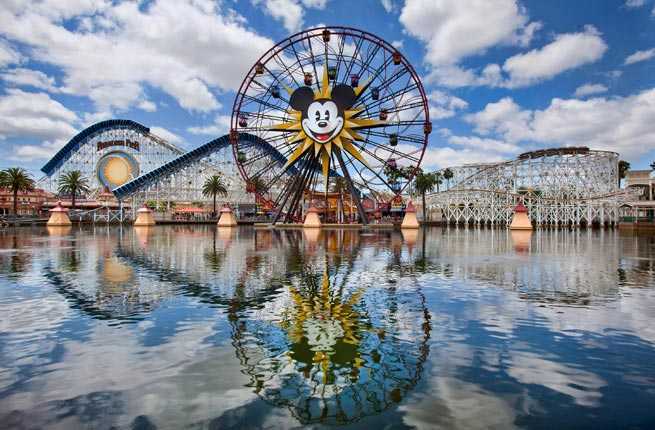
Disneyland Park
Anaheim, California
Home to magic for the whole family, Disneyland remains an enchanted oasis of family fun that consistently delivers. Disney’s incomparable theming sets the standard with immersive attractions, from the iconic Pirates of the Caribbean boat tour to the high-tech Buzz Lightyear Astro Blasters, where riders compete to beam lasers at targets. Splash Mountain remains a park favorite for families with its adventurous log flume that finishes with a picture-perfect drop, while those looking for a more thrilling adventure should explore the cursed temple at Indiana Jones Adventure on an awe-inspiring rugged transport tour. Endless opportunities to dance along with a street parade, meet and interact with Disney’s famous characters, and even train to be a Jedi at the Jedi Training Academy make for a vacation unlike any other.
PLAN YOUR TRIP: Visit Fodor’s Disneyland Guide

Sesame Place
Langhorne, Pennsylvania
About thirty minutes northeast of Philadelphia, Sesame Street’s lovable puppets come to life at Sesame Place, a 14-acre children’s amusement park. Elmo, Big Bird, and Cookie Monster are just some of the many friendly, furry characters kids can expect to encounter as they make their way through the cheerfully bright park. Sesame Place offers a thrill for everyone, with nearly all of the park’s rides built for children and adults alike. Highlights among the rides include the Vapor Trail mini steel coaster and the always-dependable spinning cups at Monster Mix-Up. For a respite from the commotion of the park, pop into one of the park’s shows, most notably Elmo the Musical, where the magic of the stage has the power to quiet and calm.
PLAN YOUR TRIP: Visit Fodor’s Pennsylvania Guide

Disney’s Animal Kingdom
Orlando, Florida
At the forefront of family entertainment for years, Disney’s newest Walt Disney World theme park, Animal Kingdom (in operation since 1998), is the world’s second largest theme park (after Six Flags Great Adventure, New Jersey). Built with families in mind, younger children rejoice at the hands-on, interactive spirit of the nature-centric park. Get up close to the cute and cuddly animals at Affection Section, where sheep, donkeys, cows, and pigs are on hand to pet, brush, and feed. The fun continues at The Boneyard, the park’s archeological dig site that welcomes children ten and under to discover dinosaur fossils and explore the world of dinosaurs. And for those 44 inches or taller and looking for a premium thrill, don’t pass up the opportunity to challenge Expedition Everest – Legend of the Forbidden Mountain, a thrilling steel roller coaster that weaves throughout the Himalayan mountain setting.
PLAN YOUR TRIP: Visit Fodor’s Disney World Guide
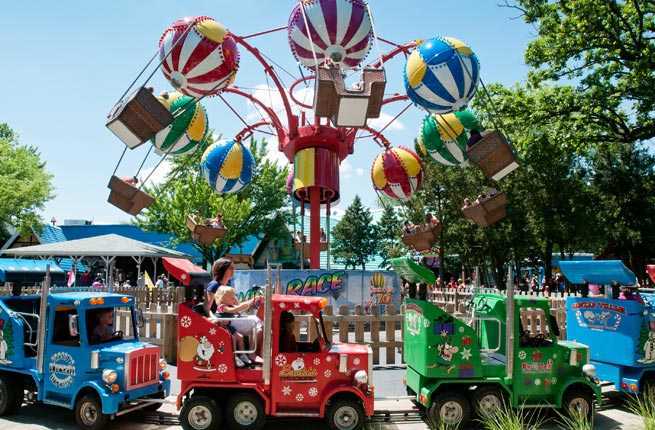
Santa’s Village Azoosment Park
East Dundee, Illinois
In a year-round tribute to the world’s most thoughtful man, Santa’s Village Azoosment Park manages to deliver summertime Christmas spirits that feel joyous and welcome. The park added its nineteenth ride to its kid-friendly roster last season with the Wildcat Roller Coaster, a steel mini-coaster that delivers genuine thrills with its drops and banked turns. The park’s animals offer a fun diversion, especially the Alaskan Railway, a train ride past reindeer, bobcats, and foxes. Complete the day with one of the treats from Tinselbella’s Pizzeria where fried candy bars, Oreos, and Twinkies leave no option but to indulge.
PLAN YOUR TRIP: Visit Fodor’s Illinois Guide
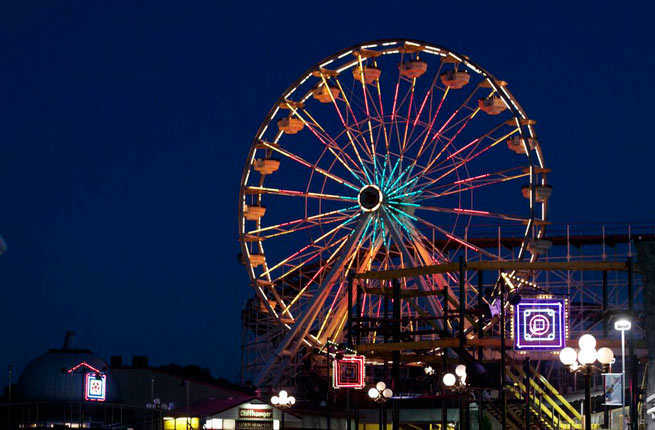
Indiana Beach Amusement Resort
Monticello, Indiana
Indiana Beach Amusement Resort overwhelms with enough family-centric activities to fill a long weekend. Families descend on the park for the dozens of accessible rides for children and its expansive water park. The park’s Kiddyland features some old-time classics like the merry-go-round and a miniature Ferris wheel alongside some more adventurous rides like the Air Crow, where kids pilot their own flying plane, revolving at their own elevation. For the park’s favorite nightly tradition, get your seats early for the World’s Longest Running Ski Show, a traditional ski show that features daredevil stunts, impressive jumps, and the classic water ski pyramid.
PLAN YOUR TRIP: Visit Fodor’s Indiana Guide

Victorian Gardens
Central Park, New York City
With the faint murmurs of the city abuzz from beyond the Central Park tree line, the Victorian Gardens transports the younger set out of the city and into a fairground. The park is centrally located on Wollman Rink (used as an ice skating rink in the winter months) just steps away from one of the most popular entrances to the park at 59th and Fifth Avenue. Over a dozen attractions pop up, including bumper boats, flying swings, and Mini Mouse, the park’s miniature roller coaster. Smaller and more compact, Victorian Gardens is the perfect start to a day exploring Central Park where treasures such as the Central Park Zoo (and its accompanying Tisch Children’s Zoo) and a visit to the Alice in Wonderland statue are family favorites.
PLAN YOUR TRIP: Visit Fodor’s New York City Guide
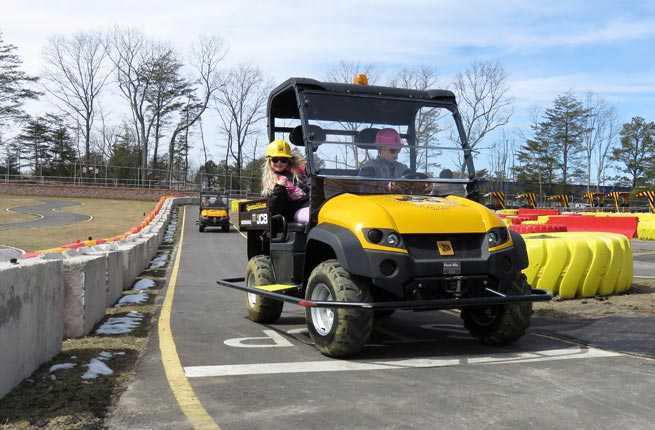
DiggerLand USA
West Berlin, New Jersey
Making childhood dreams a reality, construction zones become play pits at DiggerLand USA, the country’s first and only construction theme park. Children of all ages are finally able to get behind the controls of some of the world’s most intense construction equipment, driving, riding, and operating the bright yellow machines. Twenty-eight attractions fill the park with a bustling energy unlike any other theme park in the country, as many of the massive machines on site are nearly identical to the ones you’d see on a real construction site. And to get the full scope of what these powerful machines can do, the park’s daily Stunt Show features “heavy equipment acrobatics” (wheelies, fast turns, and kick-stands) operated by the park’s four lead stuntmen.
PLAN YOUR TRIP: Visit Fodor’s New Jersey Guide
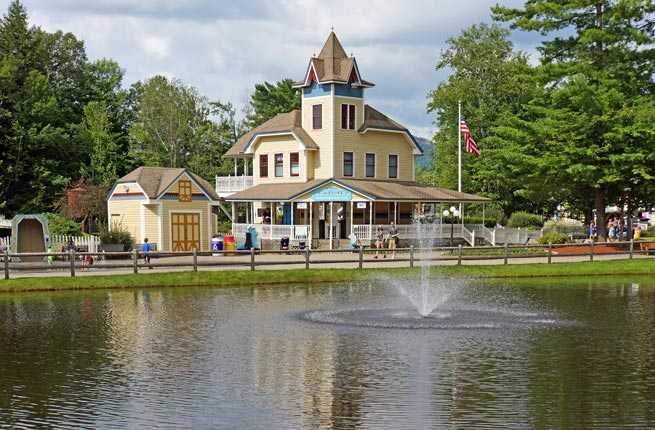
Story Land
Glen, New Hampshire
Taking a page from classic fairy tales that have been passed down through generations, Story Land excels at reinventing timeless, treasured characters. Of the park’s twenty-one kid friendly attractions, the Roar-O-Saurus coaster remains a major draw, along with the park’s Bamboo Chutes log flume. Six shows at the park provide entertainment throughout the day with shows such as Fun Times at Fairy Tale High, which follows the magical students of Headmistress Mother Goose. If you’re running near empty come mid-afternoon, make it a priority to drop into Tea Time with Cinderella (for an additional per person fee), where children have the opportunity to sip tea amidst royalty.
PLAN YOUR TRIP: Visit Fodor’s New Hampshire Guide
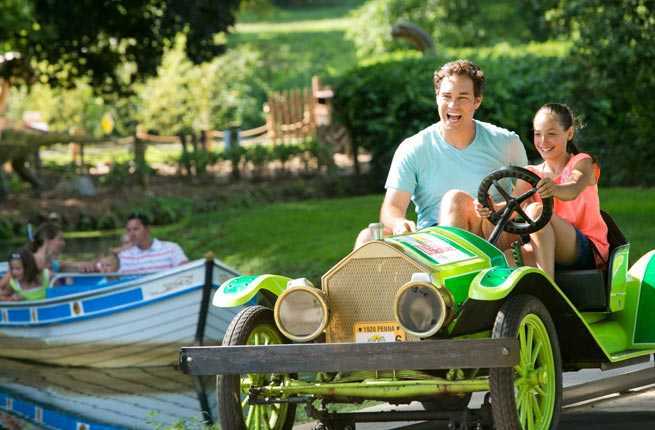
Dutch Wonderland
Lancaster, Pennsylvania
Touted as a “Kingdom for Kids,” Dutch Wonderland in Lancaster, Pennsylvania has been delivering perfect days of family fun since 1963. Start with a stroll through the park’s Prehistoric Path, which features more than twenty animatronic dinosaurs on a self-guided walking tour. Be sure to grab a park map and continue the morning with the Gondola Cruise, the Monorail, and the Sky Ride, the three best ways to scout out the rest of your day in the park. And when it comes to lunch, go for broke with the indulgent fresh cut fries at the Potato Patch, where cheese, gravy, and bacon bring the spuds to the next level.
PLAN YOUR TRIP: Visit Fodor’s Lancaster Guide
Trip Ideas
These Volunteer Salamander Crossing Guards Help Amphibians Find Love
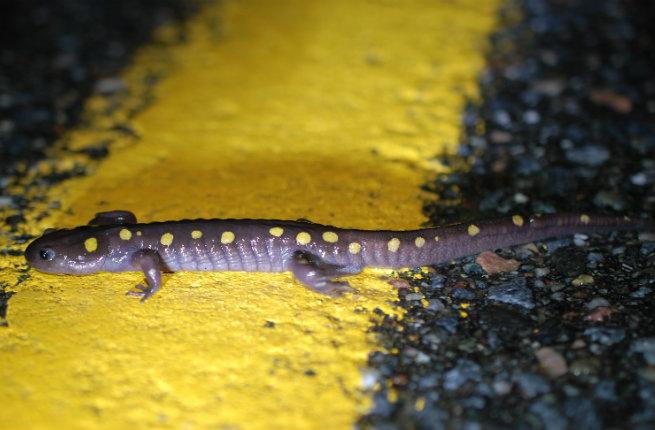
When spring days begin to thaw Vermont’s frozen ground, countless tiny amphibians stir after a long winter sleep. And on the first warm, wet nights of the year, spotted salamanders poke their rounded snouts out of their burrows, then start an annual trip to the ponds where they mate.
It’s a crawl that takes salamanders and other amphibians through the forest—and often across busy roads. “On a ‘Big Night’ when lots of amphibians are moving, you’ll see hundreds and hundreds,” says Larry Clarfeld, who helped develop an amphibian monitoring program at Vermont’s North Branch Nature Center. “But from a car, a spotted salamander just looks like a stick.”
So Vermont’s nature lovers have formed teams of volunteers to help the amphibians make the trip across the “squish zone” in safety. Networks of websites broadcast migration forecasts, create training videos, and encourage locals to add their nearest road crossing to a growing Amphibian and Reptile Atlas. And when the conditions are right, the volunteer crossing guards don raincoats and reflective vests, then head into the dark to scoop up salamanders in their bare hands for the trip across the road.
Salamanders are often dazzled by oncoming headlights, frozen in place until a volunteer arrives. “It’s as simple as moving them in the direction they’re going,” said Clarfield, “moving them off the road and a little way into the leaf litter.”
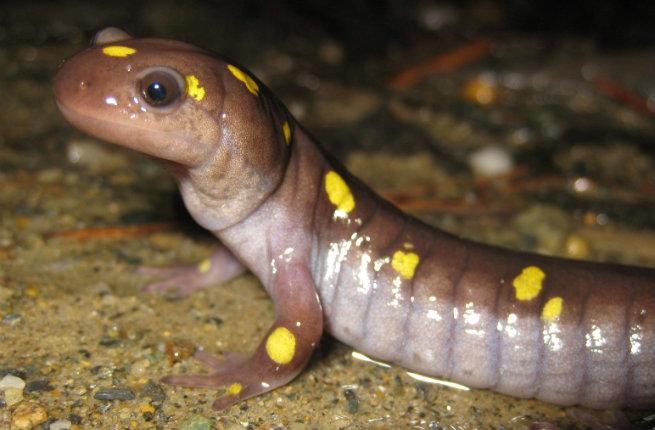
These Big Nights in Vermont are a fleeting encounter with creatures that spend most of their time hidden underground or nestled under piles of leaves. Salamanders are easy to miss, moving through the world almost entirely unseen by humans—until they set out on the road to romance.
If you take a walk through the Vermont woods in springtime, you’ll be eavesdropping on a forest full of love and longing. A chorus of wood frogs and spring peepers chirp to their mates. Squirrels grapple in the leaf litter, birds line their nests, and wildflowers unfurl tempting displays of pollen.
Safely arrived at vernal pools, the salamanders are quiet, with no flashy calls or croaks. Look past the surface, though, and you’ll find an erotic display worthy of the Kama Sutra. Spotted salamanders brush their noses across their partners’ cheeks, nudging and rubbing on the muddy pond floor. The males twist their bodies in the water, swirling and turning to attract the attention of females, who are often vastly outnumbered and have their pick of partners. As the salamanders writhe, their limbs, tails, and snouts blend together in a mass of yellow spots and dark skin.
But by the time the trees grow leaves, the salamander season of love is done. Breeding concluded, spotted salamanders and other amphibians return to a more solitary life. Back at the road, volunteers take down “Salamander Crossing” signs, hang up their raincoats, and turn in careful lists of amphibian counts. Because until spring comes again, Vermont’s spotted salamanders are nowhere to be seen.
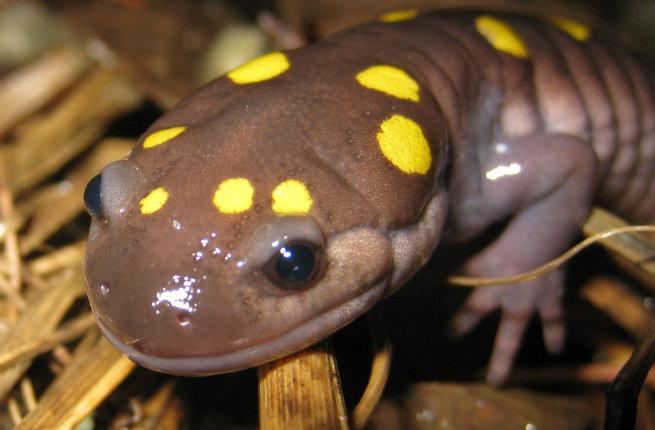
PLAN YOUR TRIP: Visit Fodor’s Guide to Vermont
-
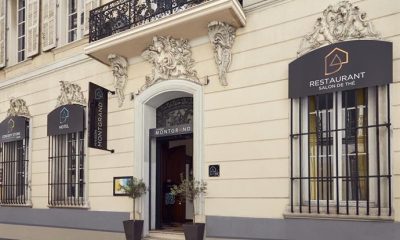
 France6 years ago
France6 years agoHotel Maison Montgrand – Vieux Port
-

 United Kingdom6 years ago
United Kingdom6 years agoBritannia International Hotel Canary Wharf
-
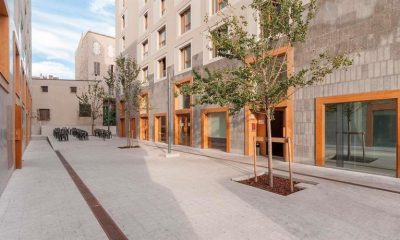
 France6 years ago
France6 years agoAppart’City Marseille Euromed
-
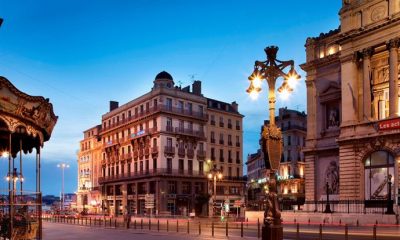
 France6 years ago
France6 years agoEscale Oceania Marseille Vieux Port
-
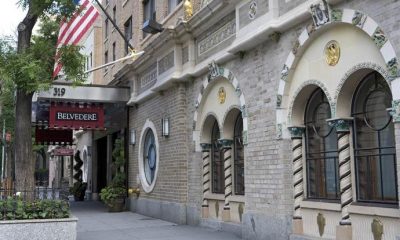
 USA6 years ago
USA6 years agoThe Belvedere
-

 United Kingdom6 years ago
United Kingdom6 years agoBest Western London Peckham Hotel
-
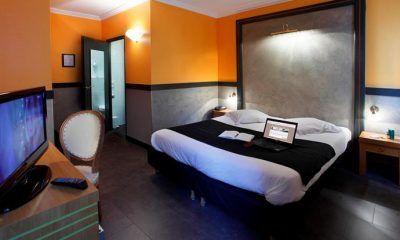
 France6 years ago
France6 years agoAdonis Marseille Vieux Port
-
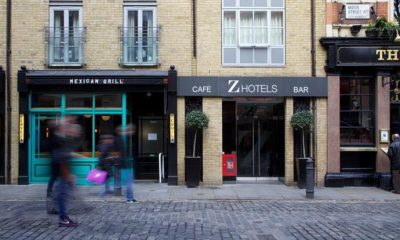
 United Kingdom6 years ago
United Kingdom6 years agoThe Z Hotel Soho












